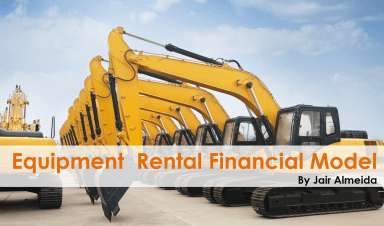
Publication number: ELQ-60209-1
View all versions & Certificate

Equipment Rental Financial Model
The financial model for an Equipment Rental Business Financial Plan is designed to assist owners and investors in making informed decisions on a Rental Business
Further information
This downloadable best practice guide provides practical and effective strategies for optimizing equipment rental business financial management. It covers various topics, including revenue and cost estimation, investment forecasting, and financial modeling techniques. By following the recommended best practices, users can better understand their equipment rental business's financial performance and make informed decisions to maximize profitability and growth.
This downloadable best practice is most suitable for small to medium-sized businesses in the equipment rental industry that want to create a financial model to evaluate the economic performance of their business. It also benefits individuals with little financial experience as the model has a user-friendly interface and includes pre-populated inputs. The best practice is designed to be adaptable to changes in the business environment or the unique needs of a particular equipment rental operation.
Everything Else.



















